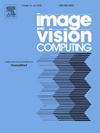FPDIoU Loss: A loss function for efficient bounding box regression of rotated object detection
IF 4.2
3区 计算机科学
Q2 COMPUTER SCIENCE, ARTIFICIAL INTELLIGENCE
引用次数: 0
Abstract
Bounding box regression is one of the important steps of object detection. However, rotation detectors often involve a more complicated loss based on SkewIoU which is unfriendly to gradient-based training. Most of the existing loss functions for rotated object detection calculate the difference between two bounding boxes only focus on the deviation of area or each points distance (e.g., , and ). The calculation process of some loss functions is extremely complex (e.g. ). In order to improve the efficiency and accuracy of bounding box regression for rotated object detection, we proposed a novel metric for arbitrary shapes comparison based on minimum points distance, which takes most of the factors from existing loss functions for rotated object detection into account, i.e., the overlap or nonoverlapping area, the central points distance and the rotation angle. We also proposed a loss function called based on four points distance for accurate bounding box regression focusing on faster and high quality anchor boxes. In the experiments, loss has been applied to state-of-the-art rotated object detection (e.g., RTMDET, H2RBox) models training with three popular benchmarks of rotated object detection including DOTA, DIOR, HRSC2016 and two benchmarks of arbitrary orientation scene text detection including ICDAR 2017 RRC-MLT and ICDAR 2019 RRC-MLT, which achieves better performance than existing loss functions. The code is available at https://github.com/JacksonMa618/FPDIoU
求助全文
约1分钟内获得全文
求助全文
来源期刊

Image and Vision Computing
工程技术-工程:电子与电气
CiteScore
8.50
自引率
8.50%
发文量
143
审稿时长
7.8 months
期刊介绍:
Image and Vision Computing has as a primary aim the provision of an effective medium of interchange for the results of high quality theoretical and applied research fundamental to all aspects of image interpretation and computer vision. The journal publishes work that proposes new image interpretation and computer vision methodology or addresses the application of such methods to real world scenes. It seeks to strengthen a deeper understanding in the discipline by encouraging the quantitative comparison and performance evaluation of the proposed methodology. The coverage includes: image interpretation, scene modelling, object recognition and tracking, shape analysis, monitoring and surveillance, active vision and robotic systems, SLAM, biologically-inspired computer vision, motion analysis, stereo vision, document image understanding, character and handwritten text recognition, face and gesture recognition, biometrics, vision-based human-computer interaction, human activity and behavior understanding, data fusion from multiple sensor inputs, image databases.
 求助内容:
求助内容: 应助结果提醒方式:
应助结果提醒方式:


